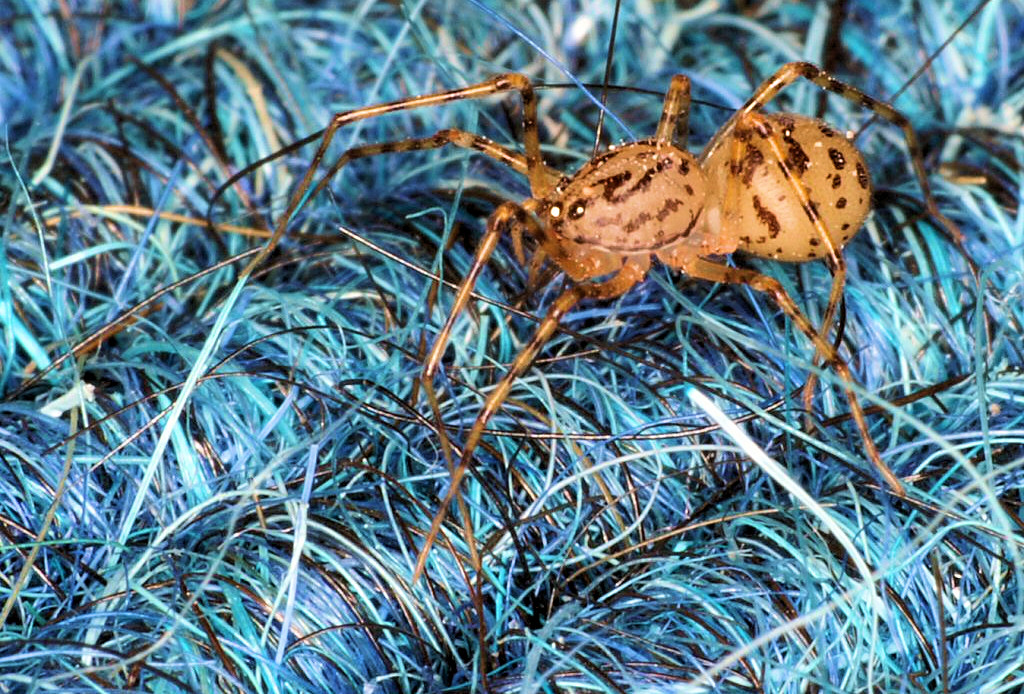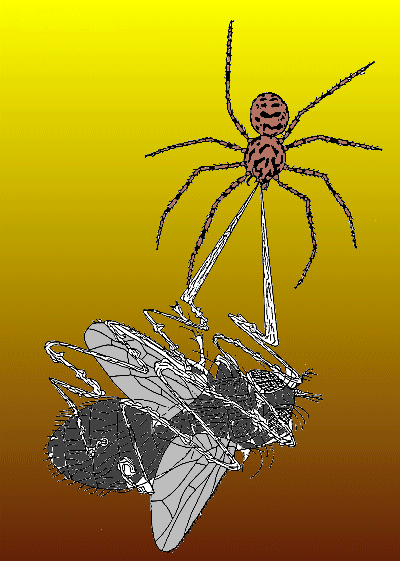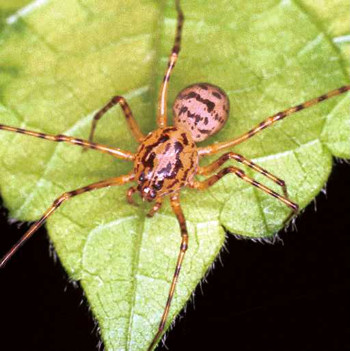

Genus Scytodes The spitting spider belongs to the family of six-eyed spiders
(Haplogynae) and stands out as one of a kind among the spider population.
Contrary to most spiders its head-breast part is much larger than its
abdomen as well as the head-breast part has a circular shape and is much
higher at the end compared to the front. |
|
|
|
Brown spitting spider, Scytodes fusca from Palmerstone, NT by Duncan Thomas What makes our spitting spider so special is the presence of silk glands in its head-breast part! Besides the silk glands in its abdomen, the spider also has silk glands connected with its poison glands. In this way the spiders has the ability to make poisonous silk. Other Arachnidae (spider like creatures with eight legs) may also have silk glands in their head-breast part like the pseudo-scorpions. Contrary to the pseudo-scorpions that use the silk from the head-breast glands to make nests, our 'spitting spider' uses it to catch prey in a very particular way. It is a very slow hunter as its long and tender legs may suggest. During night, when all insects are at rest, Scytodes starts its hunt. The spider sneaks very carefully towards its prey and at about 10 mm distance it stops and carefully measures the distance to its prey with one front leg without disturbing it. Then it squeezes the back of its body together and spits two poisonous silk threads, in 1/600 sec, in a zigzag manner over the victim. The prey is immediately immobilized. When the prey is larger the spider spits several times. Dinner is served! It is assumed that the spider uses special long hearing hairs located at its legs to locate its prey. The female does not make a nest, but carries her eggs under her belly
in a net of silk. |
 |
 |
Scytodes thoraci ca
note its two long front legs. ca
note its two long front legs. |
Scytodes thoracica |
|
Ed Nieuwenhuys, 22 march 2023
10 may 2022, 15 March 2014, 14 april 2012,
3 april 2010 , 9 march 2008, 08 February, 1998
This text was translated from an article published by: Bryan Goethals from the Werkgroep Inheemse Spinnen (WIS) Volume 1, number 3-4, 1997